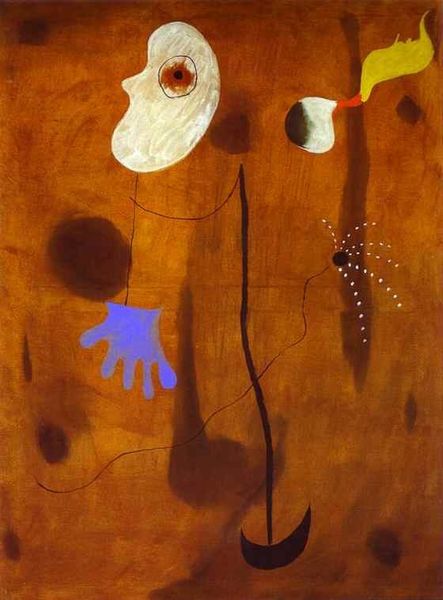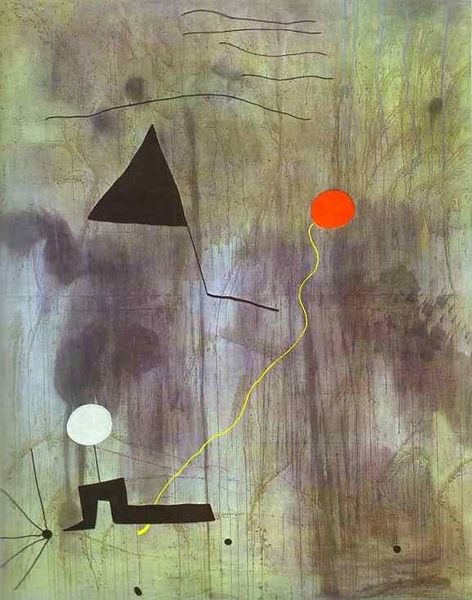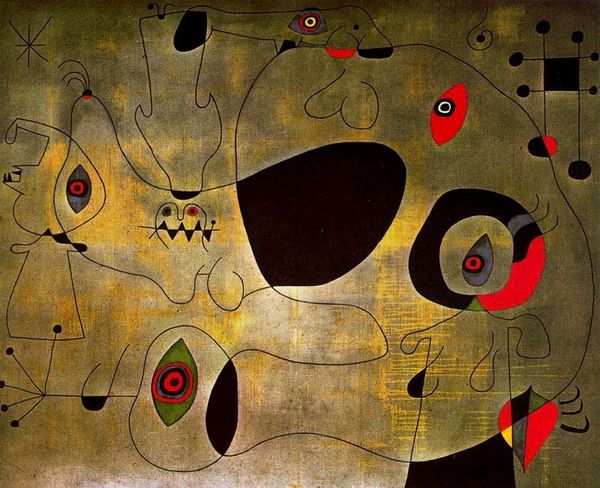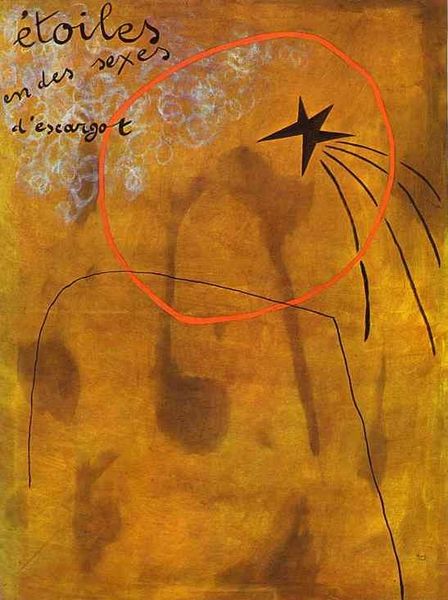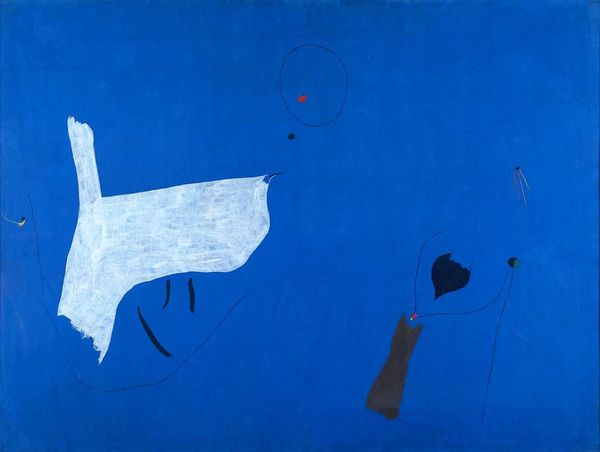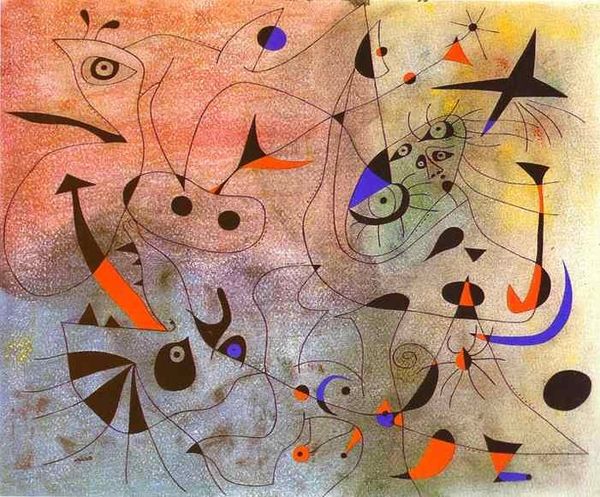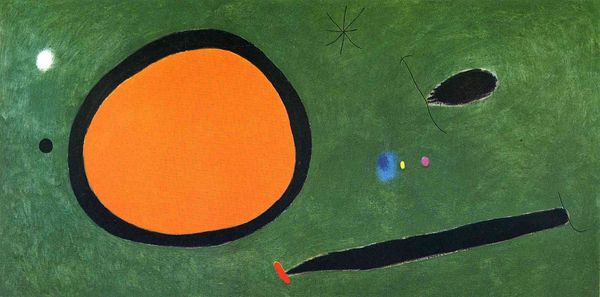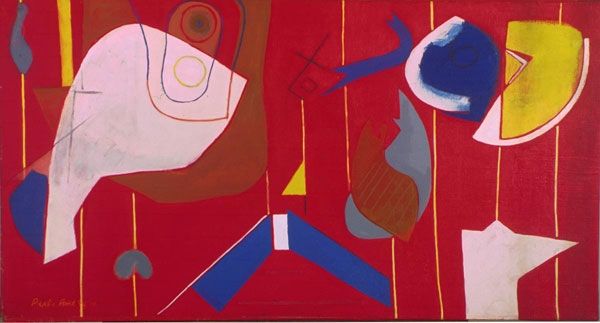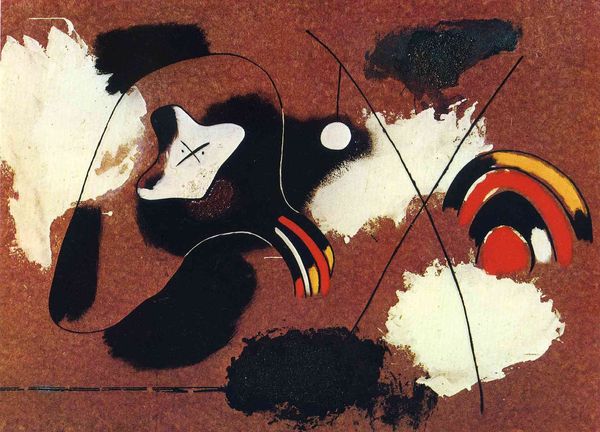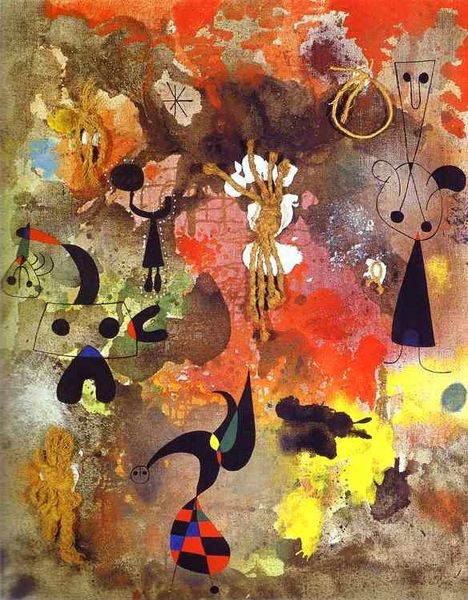
painting, oil-paint
#
water colours
#
painting
#
oil-paint
#
form
#
biomorphic
#
abstraction
#
line
#
surrealism
#
modernism
Dimensions: 195 x 280 cm
Copyright: Joan Miro,Fair Use
Curator: This is Joan Miró's "The Circus House," painted in 1927 using oil and watercolors. Editor: My initial thought is how strikingly sparse it is. The warm brown background feels like bare earth, and the figures, those lines and shapes, seem almost weightless against it. Curator: Absolutely, and I think that simplicity is deceptive. We see it during a key period for Miró, where he's stripping away representation to delve into pure form and feeling, moving towards what some consider his dream paintings. This was a revolutionary statement during the politically tumultuous interwar period. He moved beyond visual description. Editor: But even within that abstract language, there’s a palpable sense of materiality. Look at how the paint is layered in that backdrop, creating textures—a social commentary with visible means of production if you will, of labor and of course of his engagement with Surrealism. What do you make of his choice of earthy colors? Curator: Well, given that many saw the circus as entertainment for all societal classes, Miró seems to be deliberately confronting elite artistic sensibilities with everyday themes. Note the contrast between the ground, rustic colours and his pure geometry: is he inviting a democratic vision of modern art by uniting those perceived aesthetic oppositions? Editor: Precisely! The lines appear spontaneously applied, creating an unrepeatable dynamic between the viewer, the materials used, and even labor itself! What impact would its scale had upon his choices in execution? What did materials mean for Miró? It brings it home how intentional Miró's choices were as he embraced abstraction, inviting reflection not merely on 'what' is represented but primarily "how"! Curator: Thinking more widely, this piece, coming as it does in the late 20's just before the rise of fascism, also critiques prevailing art as the domain of elite culture: he's reclaiming ground through materials themselves. He offers us accessibility, suggesting alternatives outside conventional aesthetics. It is not mere 'Circus fun' here: there's more under the big top! Editor: In fact, revisiting it, I notice how deliberately constructed each element feels. An exploration into industrialised processes through 'the gaze'. Now I'm eager to find any preparatory sketches—revealing even deeper the narrative and method into construction from initial materials and production methods towards final abstract result!. Curator: Indeed, that material depth provides ways in, and as we look beyond aesthetic 'fun', we observe a dialogue opens. Thank you, the socio-historical approach can assist more than initially perceived.. Editor: Quite right, without understanding the social and material history in addition to historical impact any initial surface aesthetic enjoyment reduces its significance, but viewed collectively the whole transforms, gaining strength..
Comments
No comments
Be the first to comment and join the conversation on the ultimate creative platform.
